Michael Leggero is a professional nature and travel photographer with 20 years of experience. A commercial stock photographer, Michael is now expanding his work into the fine art community. Michael is also an educator, leading and teaching workshops all over the world to new and aspiring photographers and professionals.
Landscape Photography Mistakes
and How to Avoid Them
by Michael Leggero
What makes a great photograph? That’s something we can talk about for days and days, but what makes a photograph bad?
In this list, I decided to compile the top landscape photography mistakes I’ve noticed over the years. I’ve made all of them, and I’ll make these mistakes again. Hopefully, these simple tips will help you go from a good picture to a stellar image, especially if you’re new to landscape photography. Remember, art is subjective. My mistake might be your masterpiece, so keep an open mind. And remember that breaking the rules often leads to more creativity.
Scroll down for a list of common mistakes landscape photographers make. Plus, tips on how you can avoid or correct them.
Mistake #1: A crooked horizon. Hold your camera straight. There is nothing more harmful to an image than a horizon line that is crooked. Most cameras have grids in the viewfinder just for that purpose—use it. But if you make the mistake often and still have a crooked horizon, then you can simply fix it in post-processing. The problem of fixing it though is that when you crop, you run the risk of losing something important on the sides. The most obvious details to be observant of are places where water meets land, and trees standing diagonally.
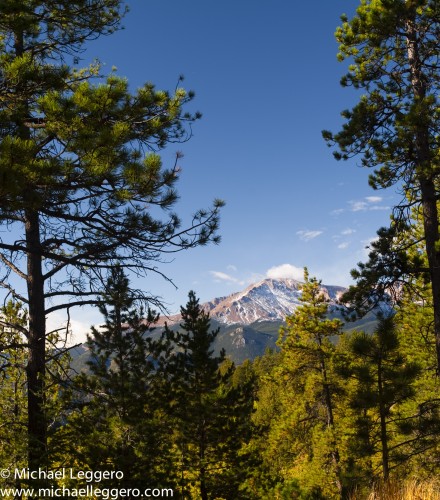 Nikon D700 35mm 1/60 f8 ISO 200
Nikon D700 35mm 1/60 f8 ISO 200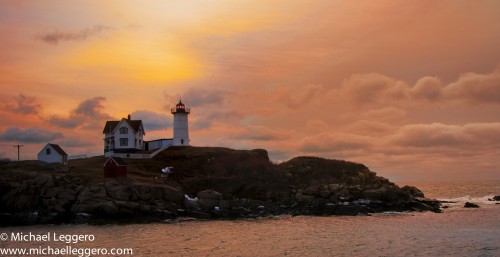 Nikon D90 25mm1/200 f6.3 ISO 200
Nikon D90 25mm1/200 f6.3 ISO 200Mistake #2: Using the wrong lens. People often think that landscapes should only be shot with wide angle lens. Don’t ever set that limit on yourself. Prime focal length lenses are the biggest culprit I blame in making this mistake. Lets face it—it’s a pain in the neck to change lenses, and zooms are our friend. Try changing lenses every five minutes in a little boat filled with other photographers, and then see how many friends you have at the end of the trip.
Find your image, compose it, and then look. 90% of the time there is one element in there—that if you zoom in and feature that element—that can make a wide panorama into an image with personality. These snow geese were tiny little dots in the original image at 28mm. But when I zoomed in and featured them, it added that extra little bit to make the image alive.
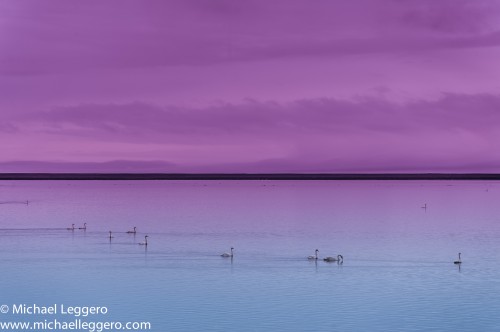 Nikon D700 150mm 1/200 f 7.1 ISO 200
Nikon D700 150mm 1/200 f 7.1 ISO 200Mistake #3: Triangular-shaped details in the corners of your images. These are supposedly the kiss of death. I hear it over and over again from other photographers. I can’t say I fully agree with this one, but it is something to watch out for. This is something that happens when you take a photograph, and then when you look at it, there is a triangular shape in the corner—a rock, or a patch of water, or you cropped out the clouds funny. Make your own interpretations here, but be aware that some people will bash your image if they see a triangle. I think it’s more of a political opinion than anything, but if you compete in shows, they will use this against you. I love this image from Alaska taken right on the side of the road—is the big pile of triangle-shaped rock in the corner wrong?
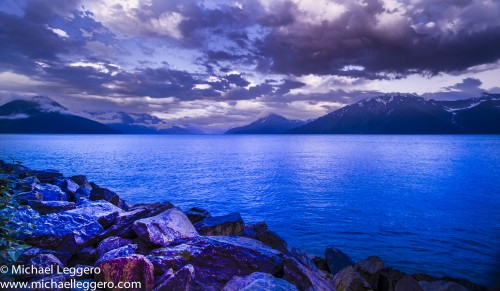 Nikon D3s 16mm 1/10 f8 ISO 200
Nikon D3s 16mm 1/10 f8 ISO 200Mistake #4: Photographing a clear, blank sky. Nothing is more boring and uneventful than a blank sky. Clouds add drama and mood to every photograph. We need clouds. A clear blue sky is a huge distraction, and just kills an image. Shoot it if you have no other choice but try, try, try to return another day for a reshoot. I can only imagine how amazing this iceberg off the coast of Greenland would have looked with a thunderstorm rolling into the background. Or how boring would this rock mountain have been without the clouds at sunset?
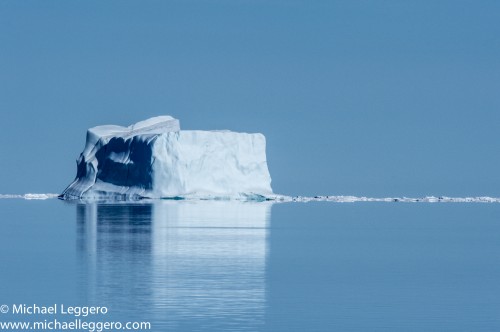 Nikon D4 600mm 1/1000 f22 ISO 1000
Nikon D4 600mm 1/1000 f22 ISO 1000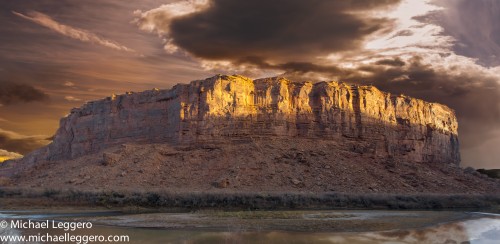 Nikon D800E 16mm 1/15 f8 ISO 200
Nikon D800E 16mm 1/15 f8 ISO 200MISTAKE #5: Driving past something and saying, “I’ll get it on the way back.” Everyone is guilty of this. My cardinal rule: Never plan to just come back. Pull over, turn the car around, listen to the groans of your passengers, and get that photograph! I don’t known a better way to explain it, but shit happens, and you won’t make it back. Even if you go back, the light is different—maybe better, but maybe worse.
It happened to me in Norway. Traveling north, I saw hundreds of reindeer along the roadside. A few days later, as I was returning south, there were almost none. If I had decided then to just get them on the way back, I would have completely missed out.
Or how often does a buffalo stand in front of Old Faithful Geyser? Maybe he is there every day but I would bet this is a rare occurrence watching the panic on the faces of the rangers.
 Nikon D4 200mm 1/2000 f85.6 ISO 400
Nikon D4 200mm 1/2000 f85.6 ISO 400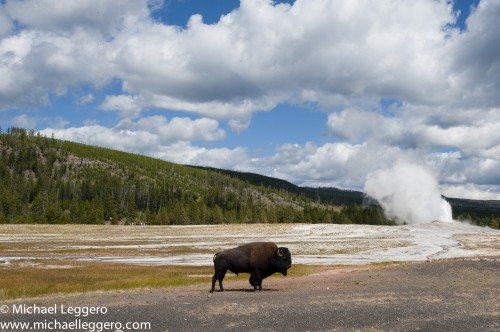 Nikon D700 35mm 1/160 f22 ISO 200
Nikon D700 35mm 1/160 f22 ISO 200MISTAKE #6: Bad light ruins every image. But sometimes, you need to shoot anyhow. You have a great image. It’s dark and dreary; your choices are to photograph that animal at ISO 1600, or get a blurry image.
It’s a big rule: A photograph with noise from high ISO is better than no photograph at all. Plus, today’s cameras can give great results even upwards of 1000 ISO. During my entire time in Greenland, I almost never dropped below 800 ISO and the results are awesome.
Or take a look at this image from the coast of Washington. While it had a low ISO, the weather was horrible, but the overcast day with the fog gave this seascape a sense of mystery and softness.
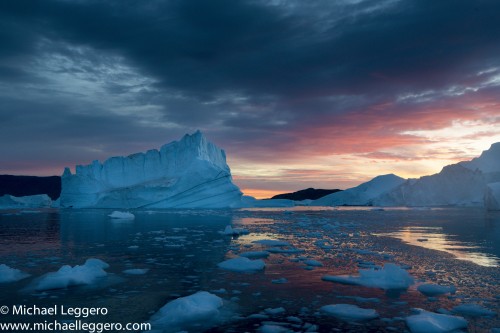 Nikon D800e 1/60 f8 ISO 1600
Nikon D800e 1/60 f8 ISO 1600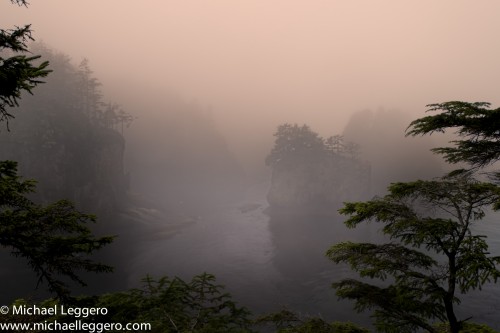 Nikon D800e 1/250 f4 ISO 200
Nikon D800e 1/250 f4 ISO 200MISTAKE/TIP #7: While this is not a mistake, keep your camera low at times, and be aware of the different perspectives. The mistake comes when the next wave hits your camera; however, beware. Was it worth it? Yes it was. I love this shot!
 Nikon D3x 16mm 1/1000 f8 ISO 400
Nikon D3x 16mm 1/1000 f8 ISO 400MISTAKE #8: Failing to look for that added element in every situation. A friend once told me that I needed a “naked horse” in many of my images. Your photograph may look great, but it just lacks a little something to grab the viewer’s attention. I’ll admit, I used Photoshop on this one to show what I mean. The original image had a boat. In the next one, look at how much more boring it is without that little “naked horse.”
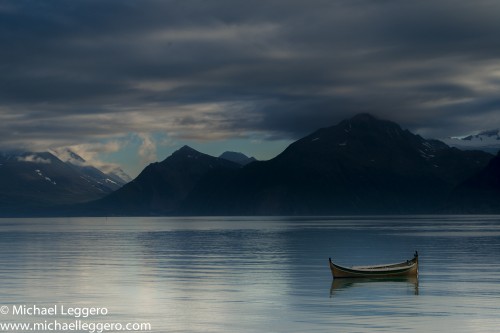 Nikon D800E 80mm 1/125 f8 ISO 100
Nikon D800E 80mm 1/125 f8 ISO 100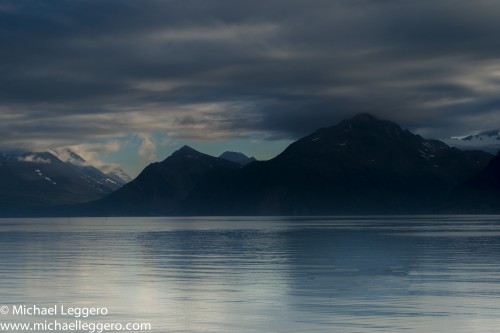
MISTAKE #9: Traveling to your shoot location at the wrong time of the year. Make sure you do your research and travel to your locations at the right time of year. Weather plays an enormous part on our photography. Leaves change colors in the fall, snow covers everything in the dead of winter, and—really—who wants to go to Death Valley in July? Sometimes though, it’s interesting to get images as the seasons change. These final images are from Deception Island in Antarctica, taken when there was still snow and when the snow was gone later that year. Not only was the snow gone, but there were icebergs in the background. Weather changes and often for the better. Enjoy nature.
 Nikon D800e 30mm 1/2250th f8 ISO 200
Nikon D800e 30mm 1/2250th f8 ISO 200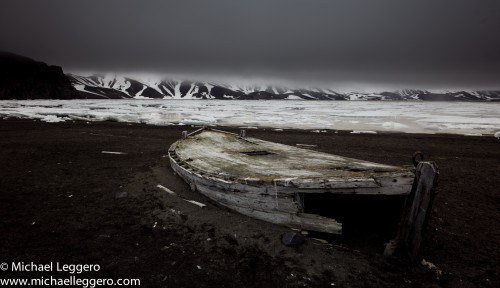 Nikon D3s 24mm 1/80 f7.1 ISO 800
Nikon D3s 24mm 1/80 f7.1 ISO 800One very important tip: Always have a camera with you! You can’t get the picture if you don’t have a camera. And yes, that iPhone you carry is a camera—use it.
There will definitely be a Part Two of this list to follow in the future, as I figure out what other mistakes I always make. But for now, work on correcting these mistakes and your landscape photos will improve.
You can follow me on 500px to see the rest of my work. Or leave a comment for me below if you have any questions or similar personal tips to share!